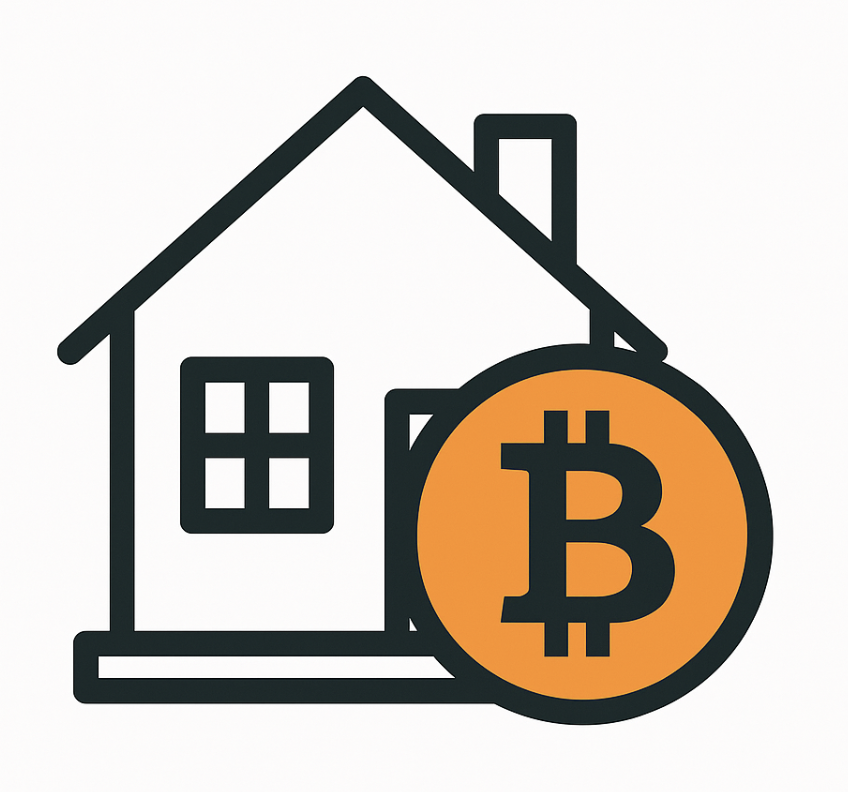Millennial Homeowners at Last: How Trump’s New Policy Could Lead to Trading Bitcoin and Gold for Your Dream House
Millennial Homeowners at Last: How Trump’s New Policy Could Lead to Trading Bitcoin and Gold for Your Dream House

After years of watching homeownership slip further out of reach while their parents ask why they don’t just “buy instead of rent,” millennials finally have a game-changing answer. Trump’s revolutionary new mortgage directive is breaking down the biggest barrier to homeownership by allowing the very assets this generation has been accumulating – cryptocurrency and gold – to serve as legitimate down payment collateral for the first time in U.S. history.
While traditional lenders have long dismissed Bitcoin portfolios and precious metals holdings as “alternative investments,” this groundbreaking policy change acknowledges what millennials have known all along: these assets represent genuine wealth that should translate into genuine opportunities. For a generation that grew up during the 2008 housing crisis, watched home prices skyrocket beyond their reach, and turned to digital assets and precious metals as inflation hedges, this policy shift isn’t just about new lending rules – it’s about finally having a path to the American Dream that acknowledges how modern wealth is actually built.
Breaking down the New Policy
Trump’s groundbreaking directive represents the most significant shift in mortgage lending practices in decades, officially allowing homebuyers to use cryptocurrency and gold holdings as collateral for down payments on residential loans. While the policy is still in development, major mortgage companies, including Quicken Loans, Wells Fargo Home Lending, and several regional banks, have already begun accepting Bitcoin, Ethereum, and physical gold as legitimate down payment sources. The requirements are stringent but manageable: cryptocurrency must be held in verified wallets for at least 90 days before applying, with values calculated using 30-day moving averages to account for volatility, while gold collateral requires certified appraisals and secure storage verification.
The implementation timeline varies by lender, with most major institutions expected to fully integrate these alternative collateral systems by the end of 2025. However, early adopters are already processing applications under pilot programs. Borrowers should note that loan-to-value ratios may be adjusted based on the volatility of their chosen collateral, and additional documentation regarding asset ownership and tax compliance will be required throughout the approval process.
Crypto Aspect
The cryptocurrency component accepts established digital assets, such as Bitcoin, Ethereum, Litecoin, and Bitcoin Cash, while excluding volatile altcoins and meme currencies. Lenders use conservative valuation methods based on 30-day moving averages, with additional 10-20% discounts, and require crypto collateral worth 150-200% of the required down payment to buffer against market fluctuations. The verification process demands signed wallet transactions, six months of transaction history, and often transferring holdings to lender-approved custodial services, with some requiring escrow accounts until loan closing to prevent market crashes from derailing approvals.
Gold Aspect
Gold becoming collateral is less revolutionary than it appears because it already has a precedent; before the 1970s, precious metals were commonly used as loan collateral, and many international banks still accept gold for high-value lending. Gold represents a fascinating return to traditional wealth storage, which many families have long understood as a cornerstone of financial security, and is finally being recognized by the mortgage industry. Lenders are accepting various forms of gold, including physical bullion bars (minimum 1 oz), government-minted coins, and, in some cases, gold certificates from approved depositories. However, physical possession is strongly preferred over paper representations.
The valuation process requires certified appraisals from American Society of Appraisers (ASA) members. Gold is priced at the current spot rate, minus a 5-10% liquidity discount. Most lenders require re-appraisals every 30 days during the loan process to account for price fluctuations. Storage and verification present unique challenges: borrowers must provide proof of secure storage, detailed photographs of the serial numbers, and chain-of-custody documentation to prove legitimate ownership. The beauty of gold collateral lies in its tangible nature and thousands of years of accepted value, offering lenders a physical asset they can actually hold, unlike the digital complexity of cryptocurrency verification.
Impact of Housing Affordability
This policy change is a lifeline for the millions of Americans who’ve been locked out of homeownership despite having substantial wealth in non-traditional assets. Specifically, Millennials and Gen Z buyers who’ve built crypto portfolios but lack the liquid cash for down payments might see their luck turn. The expanded buyer pool could be massive – industry estimates suggest over 2.3 million Americans hold cryptocurrency worth more than $25,000, while precious metals ownership spans multiple generations who’ve used gold as long-term wealth storage. Geographic markets with high crypto adoption rates and expensive housing, like San Francisco, Austin, Miami, and Denver, are expected to see the most dramatic impact, as these areas have both tech-savvy populations that require substantial down payments.
Industry Response & Implementation
The mortgage industry has become sharply divided in response to Trump’s directive; between forward-thinking lenders eager to capture new market share and traditional banks clinging to conventional practices. Progressive mortgage companies, such as Rocket Mortgage have fast-tracked implementation programs, viewing this as a competitive advantage to attract younger borrowers. In contrast, central traditional banks, including JPMorgan Chase and Bank of America, have expressed concerns about regulatory compliance and asset volatility, leading to slower adoption timelines. The public’s trust in big banks has never fully recovered since the 2008 banking crisis, so the more these banks resist this change, the more the public favors it.
However, regulatory oversight remains complex, with the Consumer Financial Protection Bureau (CFPB) requiring enhanced documentation and risk assessment protocols. At the same time, the Office of the Comptroller of the Currency (OCC) has issued preliminary guidelines for the valuation and storage of crypto assets that lenders must follow. The technology infrastructure demands are significant, particularly for cryptocurrency processing, as lenders need integrated systems for wallet verification, blockchain transaction analysis, real-time asset valuation, and secure digital asset custody.
This technological divide is creating a two-tier market, where tech-savvy online lenders can process crypto-backed applications in weeks, while traditional institutions are taking months to develop compliant systems. This potentially gives early adopters a substantial competitive edge in capturing this emerging borrower demographic.
What does this mean for Borrowers?
Borrowers should expect higher costs, more complex approval processes, and the possibility that market swings could impact their loan terms even after approval. Expect extensive paperwork, including tax records, insurance policies, and exchange statements, as well as additional costs of $200-$ 2,000 for appraisals and interest rates 0.25-0.75% higher than conventional loans. However, this alternative lets homebuyers access wealth they’ve already accumulated without liquidating appreciating investments, offering a chance to buy today using existing assets rather than waiting years to save liquid cash for a traditional down payment.
Trump’s directive represents more than just a policy change – it’s a fundamental shift that could significantly reshape both the housing market and the alternative asset landscape for years to come. As crypto and gold become legitimate forms of collateral, we could see increased demand for these assets among potential homebuyers who strategically build their holdings, potentially driving prices higher and creating new market dynamics.
The housing market itself may experience expanded liquidity as previously excluded buyers enter the market, while the success of this program could pave the way for alternative asset collateral in auto loans, business financing, and other lending sectors. International markets are already watching closely, with several European Union countries considering similar policies, suggesting this could become a global trend rather than an American experiment. For millennials and other potential buyers who’ve felt locked out of homeownership, the time to act is now – start documenting your crypto and gold holdings, research participating lenders, and consider how this policy fits into your homebuying timeline. The mortgage industry is experiencing its biggest transformation in decades, and those who understand and leverage these changes early will have the best opportunities to turn their alternative investments into the keys to their dream home. Don’t let this historic opportunity pass you by while others are still figuring out the rules.

